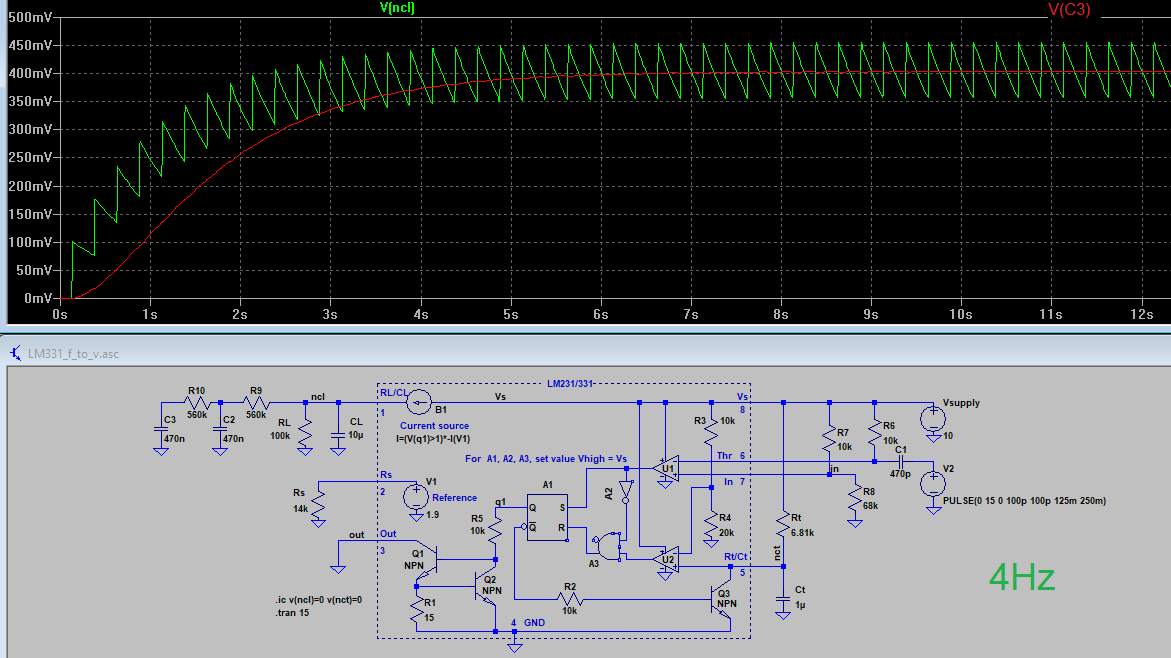Hi all,
My customer would like to use this with frequencies as low as 0 to 4Hz at the input for the frequency to voltage conversion. Using the equations for Vout in Fig 18, they're trying to figure out what values of RL and RS to use. They would like to use 100K for RL and then adjust RS. But if they leave RL at 100k then RS has to be approx. 13ohms. They fear this is REALLY low and the LM331 will not like that very much, or at best it will waste a lot of current running the LM331 to ground through only 13 ohms and the resistor will get really hot.
They found a circuit where they can boost the frequency with an additional stage, but they'd rather not do that. Can you advise on what values they should set RL and RS to be given their low frequencies?
Thanks,
Lauren



